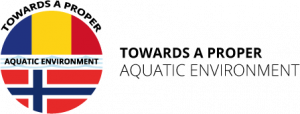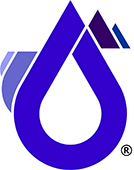THE WORKING PACKAGES (WP) AND THEIR MAIN ACTIVITIES IN THE PROJECT
1.1. Evaluation of the available analysis methods at the EU level (and international) for all required matrixes: biota, water and sediment.
1.2. Technical and financial documentation of the necessary equipment that will be used for the implementation and further operation of the methods within the National Laboratory.
2.1. Elaboration of the technical specification for the necessary equipment based on the legislative requirements
2.2. Acquiring of the available Standard methods (ISO, EPA) or home-developed methods for the compounds that will be analysed, the necessary equipment for analysis and sample preparation and consumables.
3.1. Sample treatment of biota samples (mainly fish) and water samples
The general topic of concern is to establish an optimal preparation scheme that includes the extraction and cleaning procedures of the crude extracts to selective separation of the main analytes from the various biota samples (liver, muscle tissue) and the removal of the major interferences in case of organic micropollutants analysis (proteins, fats etc). A specific topic would be sample treatment technique for biota samples.
3.2. Analytical technique for Bifenox, Cybutryne, Cypermetrhin, 17-alpha-ethinyl-estradiol, 17-beta-estradiol, Terbutryn, Diclofenac, Quinoxyfen.
4.1. Testing of the analytical methods in order to check the fit for purpose, based on the legislative requirements.
4.2. Validation. Depending on the availability of the standards methods used for the targeted compounds to be analysed in surface and groundwater, the confirmation of validation of the methods is required in order to implement and operate the next stages (screening and monitoring). For non-standardized methods, the full validation procedure is needed.
4.3. Operating. Following the validation stage, the analytical methods have to become fully operational, in order to fulfil the requirements (ex.: target limit of quantification).
6.1. Sampling, conservation and transport of samples: sampling experts from selected laboratories will go to each monitoring section and carry out the sampling procedure according to the specific sampling protocol.
6.2. Samples treatment using the specific equipment acquired within the project.
6.3. Analysis in the National Laboratory using the equipment and analytical methods acquired within the project.
7.1. Sampling, conservation and transport of samples: sampling experts from the laboratories will go at each monitoring well, using an appropriate equipment and take samples according with the sampling protocol.
7.2. Samples treatment using the specific equipment acquired within the project.
7.3. Analysis in the National Laboratory using the equipment and analytical methods acquired within the project.
8.1. Establish the relevance of the identified priority substances for both surface water and groundwater for each monitoring section and well
8.2. The analysis of the screening results in order to design the future monitoring program.
9.1. Setting of the monitoring network for the substances identified as relevant through the screening
9.2. Implementation of the surface water monitoring program according to the EU requirements: substance, investigation matrix, monitoring frequency
9.3. Implementation of the groundwater monitoring program according to the EU requirements: substance, monitoring frequency
9.4. Data collection
9.5. Data analysis according with the European legislation.
10.1. Organizing of two workshops, one at the beginning of the project and the other one at the end of the project in ROMANIA
10.2. Set up of a web page dedicated to the project
10.3. Disseminate the results of the project through brochures and other related materials to the stakeholders and general public




